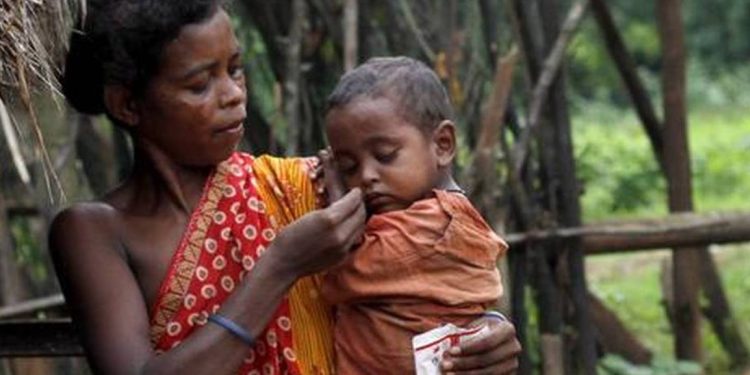New Delhi: About 17 per cent children in the age group of 0-5 years are underweight, while 36 per cent are stunted and 6 per cent are wasted, the Women and Child Development Ministry said Friday.
Stunted, wasted and underweight are key indicators of malnutrition in children aged between 0-5 years. Stunted growth refers to children who are too short for their age, typically resulting from chronic malnutrition.
Wasted refers to children who are too thin for their height, indicating acute malnutrition often due to a recent and severe weight loss.
Underweight children have a low weight for their age, encompassing both stunting and wasting, and reflects either chronic or acute malnutrition, or a combination of both.
Replying to a question in the Lok Sabha, Women and Child Development Minister Annapurna Devi said, as per the data of Poshan Tracker for the month of June 2024, around 8.57 crore children under 6 years were measured, out of whom 35 per cent were found to be stunted, only 17 per cent were found to be underweight and only 6 per cent children under 5 years were found to be wasted.
According to the state-wise data shared by her, Uttar Pradesh exhibits the highest stunting rate at 46.36 per cent, closely followed by Lakshadweep at 46.31 per cent. Maharashtra and Madhya Pradesh also report alarming stunting rates at 44.59 per cent and 41.61 per cent, respectively.
Wasting, a sign of acute malnutrition, is most severe in Lakshadweep, with 13.22 per cent of children affected. Bihar and Gujarat also show high wasting rates at 9.81 per cent and 9.16 per cent, respectively. Such high percentages reflect recent severe weight loss in children, typically due to inadequate food intake or diseases.
In terms of underweight children, Madhya Pradesh leads with 26.21 per cent, followed by Dadra & Nagar Haveli and Daman & Diu at 26.41 per cent. Lakshadweep again shows a concerning rate of 23.25 per cent.
Some states, however, fare relatively better.
Goa reports the lowest stunting rate at 5.84 per cent, wasting at 0.85 per cent, and underweight children at 2.18 per cent. Sikkim and Ladakh also show comparatively low malnutrition rates, suggesting more effective nutritional policies or better overall health conditions.
PTI







































